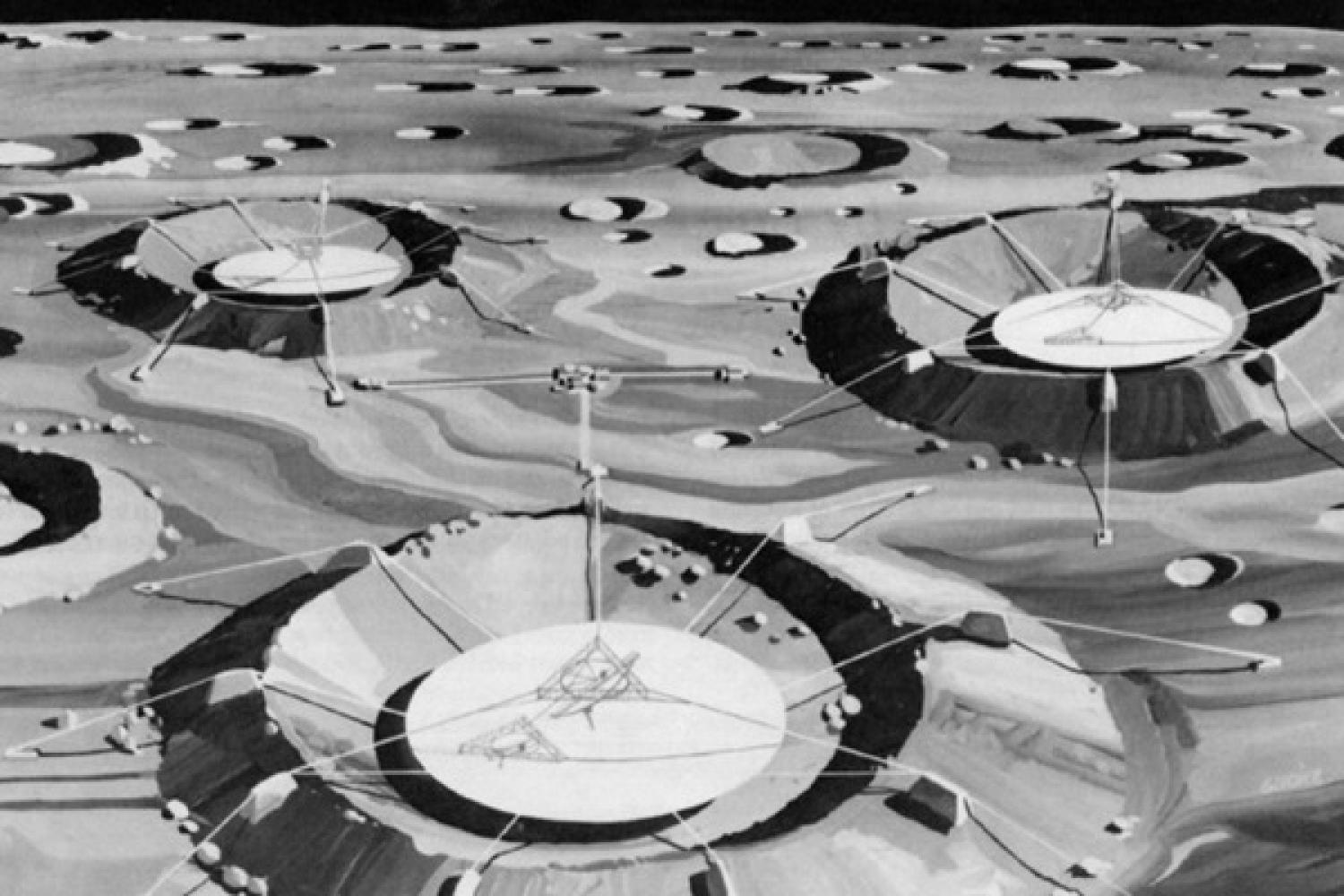The history and future of telescopes on the Moon

From Astronomy.com: For radio astronomers, Earth is a noisy place. Many modern electronics leak radio signals, which interfere with the long, faint wavelengths of light studied by radio observatories. And for decades, this invisible light pollution has pushed radio observatories deeper into so-called “radio quiet zones.” This forces radio astronomers far from other people, out to places like the barren Atacama Desert in Chile.
But it’s not just human-made devices that obstruct faint radio signals. Natural phenomena from Earth and the Sun can interfere, too. Adding insult to injury, Earth’s ionosphere — where solar radiation ionizes molecules in our upper atmosphere — blocks the longest radio wavelengths from reaching our planet’s surface at all.
Scientists have long eyed a solution: the farside of the Moon. Because it always faces away from Earth, a radio telescope placed on the lunar farside would be almost completely sheltered from Earth-generated radio noise. There, astronomers would study a range of phenomena that can’t be seen from our planet, or even by Earth-orbiting space telescopes. A telescope on the Moon could show us what happened before the universe formed its first stars and galaxies, or let us see electromagnetic fields around distant exoplanets, revealing extremely subtle yet fundamental properties related to a world’s true potential for hosting life. Read more...

